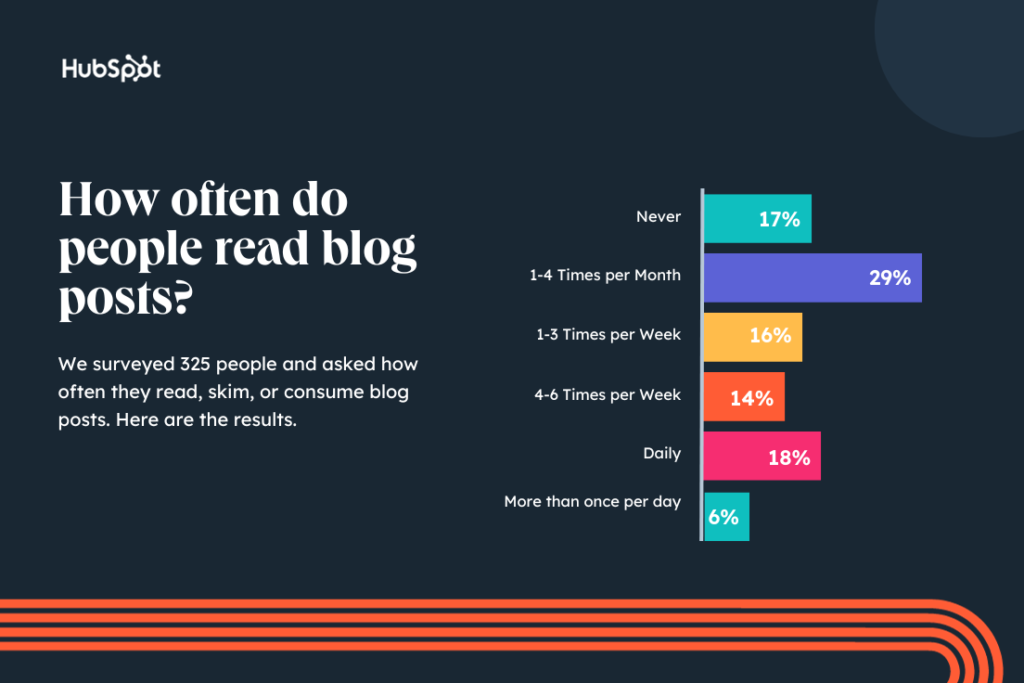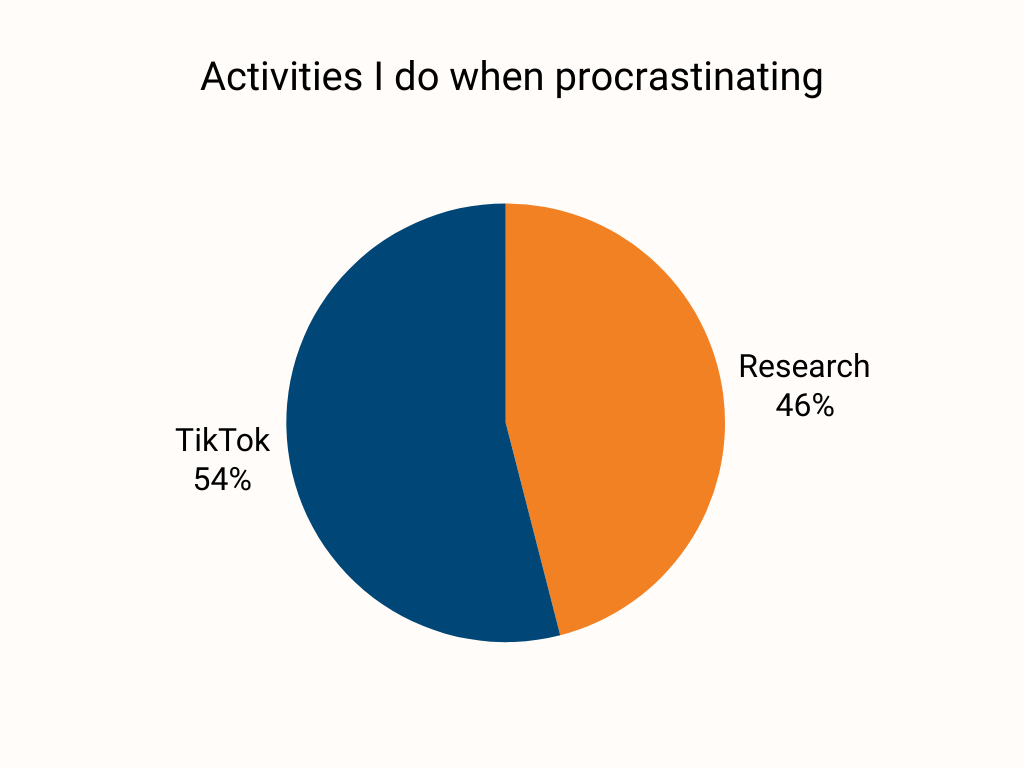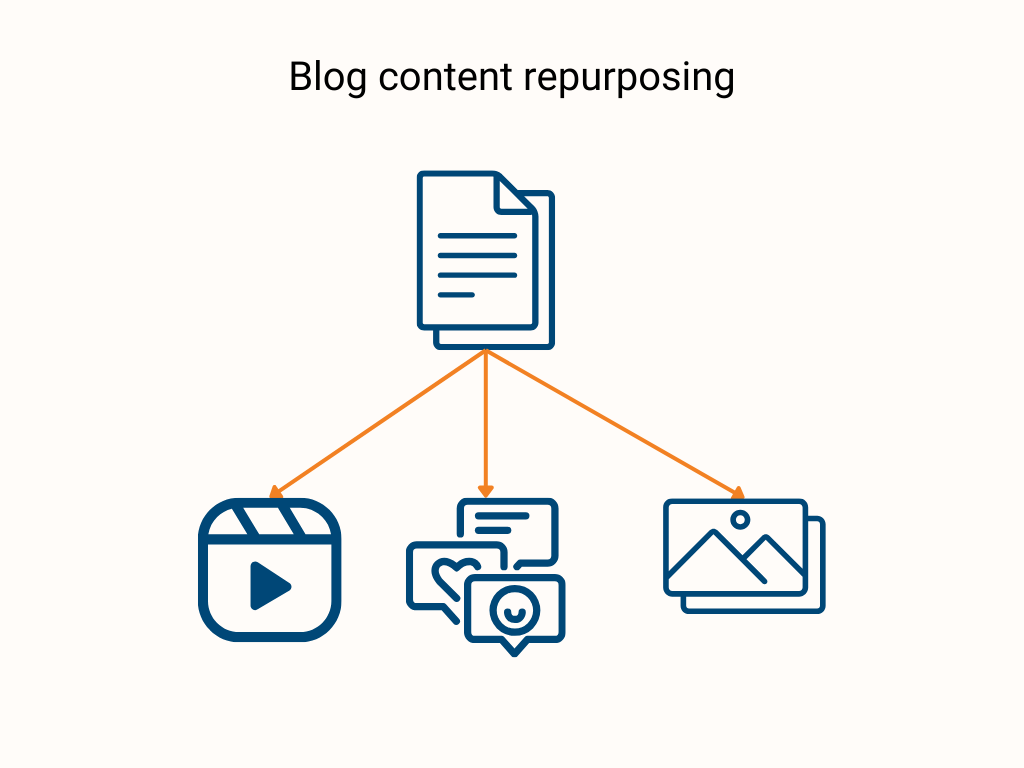Why Start a Blog Now? 8 Reasons Why It’s Still a Must

Blogging is dead. At least I’ve read its obituary many times in the past few years.
One thing is for sure: My old blog is dead. I redesigned my old site and deleted all the old blog posts to start again.
But why start a blog now?
Native social media content definitely gets much better engagement.
Video has been crowned the king of the content realm for many years now.
SEO keeps changing. So unless you’re an SEO expert, you’re not sure what blogging best practices for search visibility are anymore.
And AI is lowering the barrier to creating long-form content, therefore increasing the competition over any keyword that matters.
That being said..
There are several reasons why you might want to start a blog this year and why blogging is still worth the effort.
1. Many People Still Read Blogs
They do.
In HubSpot 2024 State of Marketing Report, 83% of people surveyed responded that they still read blogs. The majority of those do so more than once a week.

2. Blogs Are One of the Best B2B Marketing Channels
This becomes even truer if your target audience is B2B decision-makers, which is the case for me.
71% of B2B buyers consume blog content during their buyer journey, and B2B marketers who have blogs get 67% more leads than those who don’t.
(Source: Optinmonster)
In addition, something really important about blogs and long-form content in B2B is that they are a great tool for qualifying leads. While you might get more engagement on social media, someone who would make the effort to read a blog post about a topic related to their business is a clear sign of showing interest.
And if you’re selling a high-ticket item, that even becomes more and more crucial to your business.
3. Long-form Content Builds Trust
Well-researched long-form content tends to build trust, trust leads to authority, which turns into leads and shortens the sales cycle.
It allows you to showcase your knowledge and experience.
70% of people would rather learn about company through articles rather than an advert, and 82% of consumers feel more positive about a company after reading custom content.
(Source: demandmetric)
Write an in-depth analysis and offer an expert opinion.
As in anything, it’s not as straightforward as that. But with consistency in quality, it will pay off.
4. Microcontent Is Not for Everyone
You should be on TikTok, you should be on Instagram, and you should be posting daily on LinkedIn. A common piece of advice you hear from marketing influencers.
While there is some truth to this, micro-content (such as social media content like written posts and short videos) requires a different marketing operation strategy that might not be for all businesses or influencers.
This is, in fact, one of the most common challenges I come across working with startups, either as a marketing consultant or managing their marketing departments. They have a team of two and a tiny budget, yet they want to be everywhere all the time. Eventually, they will have to compromise the quality of their work, burn out their team, and set unrealistic expectations for their audience that they can’t maintain.
My best advice for this is to focus on, or at least start with, the tactics and channels that are not only best for your marketing objectives but also the ones that you can realistically maintain with the resources you have.
For personal branding, most working professionals, like myself, don’t have the time to constantly post on social media while maintaining quality. Even with AI, automation, and planning content calendars a month ahead of time.
For me, I like writing and love research. I can spend hours researching the most trivial things for the fun of it.

When I started developing the marketing strategy for a recent company I worked with, we started releasing a newsletter once a month. I made sure that the small team we had sent the monthly newsletter out at the beginning of each month, no matter what. Once that was established, we increased the frequency to once a week. This ended up generating 277% year-on-year growth for them.
Quantity does matter. Native social media content does generate more engagement. Short videos are, on average, more accessible than long-form written content.
All of these are true.
But finding something that works with your target audience, aligns with your business objective, and can realistically and constantly produce for a long period is the best content strategy that I would recommend for any startup or SME.
So for me, I will do my best to publish one blog per month, and maybe later I will increase the frequency as we move along.
5. Long-Form Content Is the Best for Repurposing
The bad news about writing long-form content is that it’s hard. The good news is that it will make it easier for you to create more short-form content.
Not only will blogging give you more diverse content for your social media in the form of blog post links, but you can also convert this blog content into all sorts of media.
Take parts of your blog post or article (or even a long YouTube video) and repurpose them into social media posts and shorter videos.

This way, you will reach more people and extend the life of the content that you worked hard on.
6. Own Your Media
You should know this by now: You don’t own your social media accounts; you just rent them.
Any social media platform, including LinkedIn, Meta, TikTok, or Google’s YouTube, can, and has done so many times before, restrict access to your content, even from your followers.
Not only that, your account itself can be very easily restricted and even take down your account that you spent so much time and money growing.
While taking the time to build your audience on social media is important, it is vital to build your own community via email.
Blogs and lead magnets are the best ways to scale your email list and increase its subscribers.
Speaking of which, make sure to leave your email in my new newsletter to receive the latest updates on marketing trends, strategies, and best practices.
7. Blogs Are Evergreen Content
Yes, you need to update them every once and a while, but the work is minimal compared to creating completely new content.
While “passive income” is still a debatable concept, since you still need to put in some work, having content on the web that people will most likely still come back to years after it was created is a great way to have this marketing machine work for you with little effort from your side.
You can also reshare your old blog posts on your social media or email every once in a while when it makes sense.
8. Blogging Still Works for SEO
While there are still a lot of opinions about the recent Google updates, one thing remains true: blogs still add great value to your SEO efforts.
Unoriginal automated content, especially with abusing AI and relying on spammy link-building techniques.
The old advice still stands: write for humans, not search bots. Focus on quality over quantity, and write content that actually adds something to the topic you are discussing, not just for SEO.
As Google put it:
This update involves refining some of our core ranking systems to help us better understand if webpages are unhelpful, have a poor user experience or feel like they were created for search engines instead of people.
(Source: Google)
The bottom line is that blogging for SEO is getting tougher, but it still works if you are willing to put in the effort.
In addition to all of this
I’m writing to share knowledge and try to demystify some of the complex topics in marketing.
Not just for other marketers but also for future clients and employers.
Marketing is notorious for being the profession that everybody knows about more than the actual marketers. So at least, by sharing knowledge with other non-marketing professionals, their opinions will be more informed.
If you made it this far, you’re a champ! Thank you for your time. I hope you learned something useful from this.
Check out my new website design. It’s about 3–4 pages for now. Let me know what you think (I’m always open to feedback on my LinkedIn or email).
Most importantly, don’t forget to subscribe to my newsletter to get the latest blog posts with the best marketing tips, trends, strategies, and best practices for your business right in your inbox.
The newsletter might be a little infrequent at first, but I’m aiming to make it weekly as we move along.
And if you found this useful or entertaining, please don’t forget to share it with others in your network.
